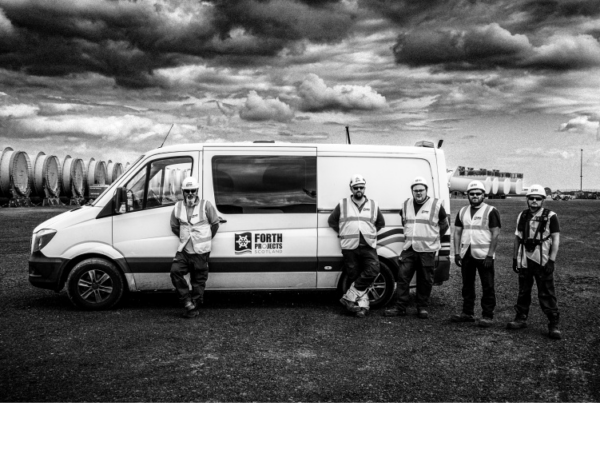Ben McIntosh is a Port Operator at the Port of Dundee, Forth Ports. Here he tells us the different points he ways he communicates in his job.
I operate a Sennebogen material handler to discharge various bulk cargoes from vessels at the Port of Dundee, I make contact with the chief before the discharge commences and confirm where he wants the discharge to start and confirm instructions within the discharge plan. This is our toolbox talk with the vessel, stevedores and others involved in the discharge; we always confirm the location of any fuel tanks, obstructions or support beams within the hold to prevent damage. The chief or their deputy is always present during the discharge; we’ll speak with them if we need to make any changes or discuss progress.
I’m notified of incoming vessel arrivals the previous day by my Operational Supervisor, I’ll come in early to complete my pre-use checks, fuel up and move the Sennebogen material handler to an appropriate position near the vessel. Our roles within the discharge are allocated during our pre-shift briefing where it’s made clear what our responsibilities and task instructions are.
After the majority of cargo has been discharged, we work with the crew to perform trimming, they have specialised tools to trim areas we can’t access. Communication during trimming can be difficult as the trimming gang and vessel crew don’t always speak the same languages. Communication is noticeably easier with crew from nations surrounding the UK such as the Netherlands or Spain. We always need to work safely and communicate as best we can; we’ll often rely on the chief or agent to communicate with the crew where possible.
We rely on face-to-face communication methods which we feel is best practice to show the vessel crew what needs to be done, it’s not always simple but we find a way to keep everyone safe. We also utilise radios, BS7121 hand signals and even simply pointing, it’s still effective to communicate like this.
Our process for berthing vessels keeps everyone safe and coordinated on the vessel and shore. Our Port Marine Assistants (PMAs) are present at every berthing and release. Radios are used between ship and shore; the pilot and PMA will remain in constant contact to coordinate berthing and release. I can speak to the PMA and ask any questions or make requests to the ship. The PMA will liaise with the vessel to confirm adequate berthing arrangements.
Join Us
Find out more about the benefits of being a PSS member and how to apply.

